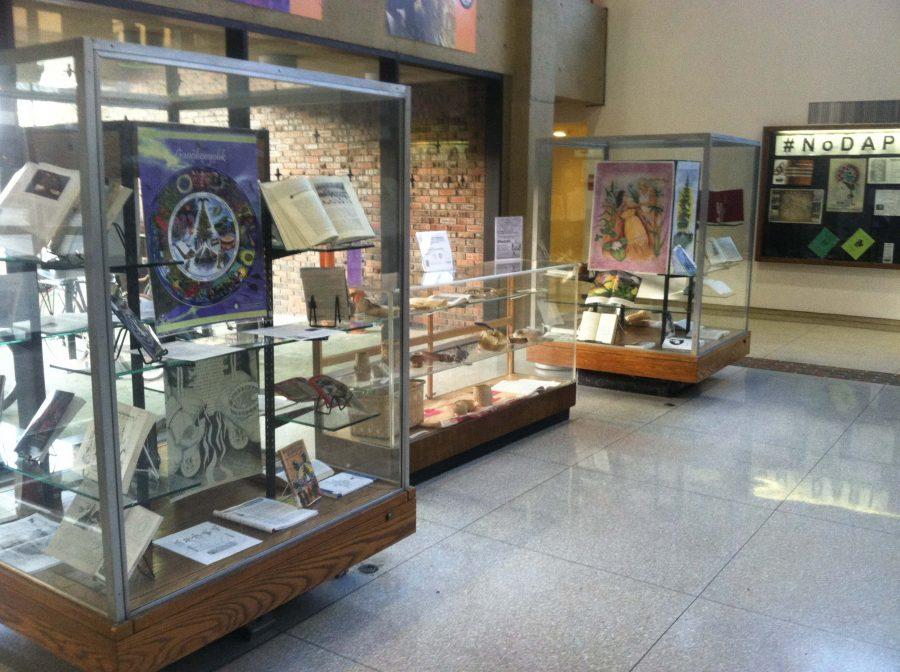NASO celebrates Native American Heritage Month
The Native American Students Association set up a display inside the main entrance of the E.H. Butler Library.
November 30, 2016
SUNY Buffalo State is celebrating Native American Heritage Month with events, and displays throughout the month of November.
On Aug. 3, 1990 President George H. W. Bush declared the month of November as National American Heritage Month, commonly referred to as Native American Heritage Month.
The Native American Students Organization is in charge of the events that are created to celebrate this month. The purpose of NASO is to build unity among people, and to educate all Buffalo State students on concerns of Native Americans.
NASO also provides understanding of Native American culture, encourages the principles of self-awareness, unity, self-determination, collective work and responsibility of Native Americans. NASO organizes events to increase knowledge and perspectives of concerns.
The main NASO event, “NASO Thanksgiving Dinner” was in the Campbell Student Union Social Hall on Friday, Nov. 18 from 5 p.m. to 9 p.m. It was a traditional dinner and social Thanksgiving experience. Free food and beverages were provided along with traditional singers, dancers, and native craft vendors. All were welcomed, and donations for Standing Rock, North Dakota were collected.
The event also hosted Caleb Abrams, who presented his documentary films, “Remembering the Removal,” and featuring PBS documentary, “Lake of Betrayal.”
“Remembering the Removal” tells the story of the Allegany Senecas and their struggle against the Kinzua Dam. A struggle that ultimately led to the forced relocation of hundreds of Seneca families and the loss of over 10,000 acres of tribal lands. The film features interviews with removal survivors and incorporates archival footage from the film “Land of our Ancestors.”
“One of my goals with this project was to learn,” Abrams said. “I wanted to gain a deeper understanding of how something like this could happen and how if effected those who had to relocate.”
Abrams continued:
“My other goal was to share what I was learning. I wanted people to understand what happened to the Seneca people and how they tried to stop it.”
“Lake of Betrayal” examines the U.S. government’s taking of Native lands for dam-building and the extraordinary fight the Seneca Nation undertook to protect its sovereignty and ensure its cultural survival.
Ten thousand acres of treaty-protected Seneca territory became sacrificial land as the U.S. government pushed for the construction of Kinzua Dam.
The story behind Kinzua Dam goes deeper than the waters that destroyed families, homes, churches, the ceremonial Longhouse, schools and the Seneca way of life. It explores the U.S. government’s treatment of Native Americans and the handling of Native American policy during the post-WWII era and exposes the political manipulations at the state and federal levels that led to the betrayal of one of the nation’s oldest U.S. and Indian treaties.
It is intended for national broadcast during Native American Heritage Month in November 2016, 50 years after the dam went into operation and flooded the Seneca’s ancestral lands.
For more information on any future NASO events, visit the NASO page on Bengal Connect.
email: [email protected]




